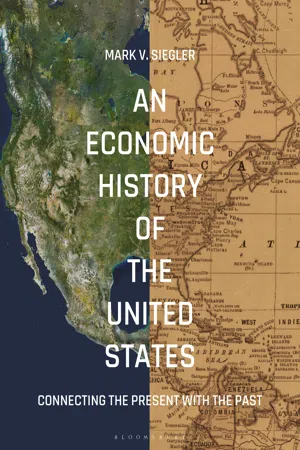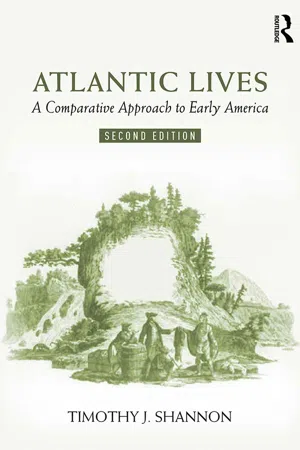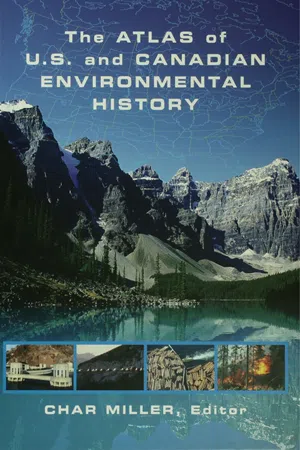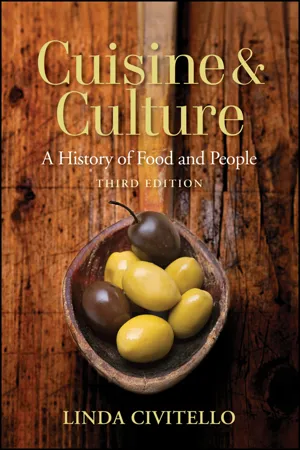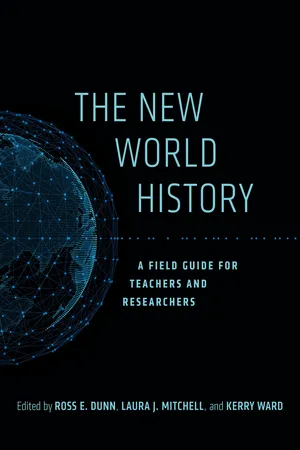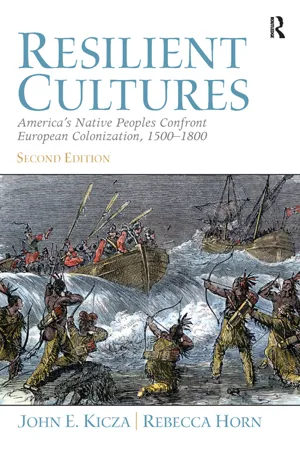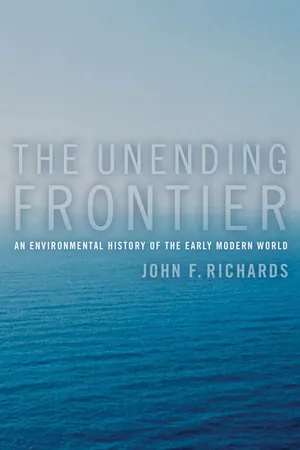History
Columbian Exchange Culture
The Columbian Exchange Culture refers to the widespread exchange of plants, animals, foods, human populations, and diseases between the Eastern and Western Hemispheres following Christopher Columbus's voyages to the Americas in the late 15th and early 16th centuries. This cultural exchange had a profound impact on the development of societies and economies on both sides of the Atlantic, shaping the modern world.
Written by Perlego with AI-assistance
Related key terms
1 of 5
10 Key excerpts on "Columbian Exchange Culture"
- No longer available |Learn more
An Economic History of the United States
Connecting the Present with the Past
- Mark V. Siegler(Author)
- 2017(Publication Date)
- Red Globe Press(Publisher)
47 3 European Settlement and the Columbian Exchange The “Columbian Exchange” refers to the widespread exchange of diseases, plants, food crops, animals, ideas, culture, and human populations between the Old World (Eurasia and Africa) and the New World (Americas) following the voyage to the Americas by Christopher Columbus in 1492. 1 This was an unprecedented event in human history, which had profound ramifications throughout the world. This chapter examines how this exchange helped create the foundations for the United States’ economy and sowed the seeds for future economic growth and development. In economics, “exchange” usually refers to voluntary and mutually beneficial exchange, so the Columbian Exchange is somewhat of a misnomer since it was decid-edly one-sided. European populations in the Americas and Europe expanded dramat-ically due to new crops, while indigenous populations and societies in the Americas collapsed because of the onslaught of devastating European diseases and weapons. In 1500, the European share of the world population was 11 percent, while the indige-nous populations in the Americas represented 7 percent of the world total. By 1800, however, the European share of the world population had almost doubled to 20 percent, while the indigenous populations in the Americas had plummeted to less than 1 percent. 2 Populations in Africa grew as well, but millions of Africans were enslaved and forcefully transported to the New World, in part to fill the void created by the collapse in Native American populations. Four main questions are addressed in this chapter: • What were the consequences of the Columbian Exchange? - eBook - ePub
Atlantic Lives
A Comparative Approach to Early America
- Timothy Shannon(Author)
- 2019(Publication Date)
- Routledge(Publisher)
2 The Columbian ExchangeFigure 2.1 Smallpox among the Nahuatl in Sixteenth-Century Mexico.Of the many diseases transmitted across the Atlantic in the Columbian Exchange, smallpox was the most deadly for Native Americans (see Selection 2). Considered a childhood disease in Europe, in America it led to fatality rates that ranged from 30 to 90 percent of infected populations. This image of Native Americans suffering from smallpox comes from a sixteenth-century Spanish collection about the Aztecs.Source: Florentine Codex, Book XII folio 54. Bernardino de Sahagún, Historia general de las cosas de la Nueva España (1540–1585).Introduction
The passage of human beings between the Old World and the New led to a much wider transfer of plant and animal life commonly known as the Columbian Exchange. Some of this exchange occurred by design, such as when Old World farmers planted American crops in their fields; other times, the exchange was inadvertent, such as when colonists unwittingly introduced new diseases to Native American populations. Whether purposeful or accidental, such exchanges forever altered the nature of plant, animal, and human life on both sides of the Atlantic. Formerly isolated ecosystems became intertwined and transformed in the process. Some species experienced extinction or near extinction, while others flourished in new surroundings unchecked by natural enemies. While scholars have typically studied the human actors involved in this drama, we cannot appreciate the full impact of the Columbian Exchange without considering the other forms of life it affected.The most profound changes wrought by the Columbian Exchange resulted from the transmission of microbes from the Old World to the New. European sailors, explorers, traders, and colonists brought to the Americas a number of diseases to which Native Americans had had no previous exposure, and therefore, no natural immunities. Smallpox, measles, influenza, bubonic plague, and others broke out in “virgin-soil epidemics” among these new host populations. Estimating the impact that these diseases had on Native Americans has become a contentious business among scholars, involving debates over the pre-Columbian population of the Americas and the fatality rates associated with virgin-soil epidemics. On the high end, some scholars estimate that as many as 18 million Indians lived in North America prior to 1492, and that Old World microbes reduced that number by as much as 95 percent. More conservative estimates place the pre-Columbian population of North America at 4–7 million, with a 60–70 percent reduction in that number by 1700. - Char Miller(Author)
- 2003(Publication Date)
- Routledge(Publisher)
T he Columbian exchange refers to the exchange of plants between the Old and New Worlds and the introduction of animals from Europe to the Western Hemisphere following the arrival of Europeans in the fifteenth century. By introducing a host of crop plants and domesticated animals to their new environment, the Spanish, French, and British settlers attempted to “Europeanize” the North American continent. Beginning with the second voyage of Columbus in 1493, the Spanish introduced wheat, melons, onions, sugarcane, grapevines, radishes, chickpeas, cauliflowers, cabbages, and lettuce, as well as horses, cattle, swine, sheep, goats, and chickens. This voyage began the exchange of plants and animals between the New and Old Worlds that would have significant effects on the environments and ecologies of both worlds.Diseases. The Columbian exchange also spread Old World diseases, such as smallpox, influenza, and measles, among the indigenous populations—none of which had immunity to those diseases. Along the Atlantic coast of Canada, for example, fishermen and fur traders exposed indigenous peoples to European diseases during the early sixteenth century. During the seventeenth century, diseases decimated Native American populations in present-day New England, while during the eighteenth century Russian explorers spread diseases among the Aleut, Eskimo (Inuit), and Tlingit in the Pacific Northwest. Although the Old World diseases introduced in the New World were often catastrophic to indigenous populations, the Columbian exchange brought nutritional benefits and improved food supplies with the addition of new crops and new animal species.The exchange of flora between the New and Old Worlds was extensive by the seventeenth century. By the late eighteenth century, many agricultural plants had been traded, particularly between the Western Hemisphere and Europe and Africa. Although some native animals from the New World, such as turkeys and llamas, were introduced in Europe, the exchange of fauna for agricultural purposes was primarily from Europe to the New World.Sources: James Lang, Notes of a Potato Watcher (College Station: Texas A & M University Press, 2001), 21; Elaine N. McIntosh, American Food Habits in Historical Perspective (Westport, Conn.: Greenwood Press, 1995), 65; and The Columbian Biological Exchange. Dr. Harold D. Tallant, Department of History, Georgetown College. 3 Dec. 1998. <http://spider.georgctowncollege.edu/htallant/courses/his111/columb.him- eBook - PDF
- Merry Wiesner-Hanks(Author)
- 2015(Publication Date)
- Cambridge University Press(Publisher)
These products were often consumed in new urban social settings and cultural institutions, where men—and a few women—shared ideas as well as commodities. Religious reforms and reinvigorations heightened spiritual zeal and created new arenas of conflict, as well as sharpening those created by rivalries over territory or resources. The early modern world was a new one of global connections, in which goods, ideas, and people—including peasants and slaves— moved and mixed, changing social and economic patterns and creating novel cultural forms. the spread of disease Prime among the disastrous effects of the Columbian Exchange was the spread of disease, which began with Columbus’ second voyage in 1493. This expedition was huge, with about 1,500 men, includ- ing adventurers, soldiers, artisans, and farmers who brought with them seeds for European crops and farm animals. This voyage set a pattern that would be followed in many other places. The ships landed on the large island of Hispaniola, which had a population between 400,000 and 600,000 engaged in farming cultivated plots. The Spanish were mostly interested in gold, and they captured, tortured, and killed the indigenous Taino in their search for precious metals. Many went back to Spain disappointed after a few weeks, and many more died of starvation, intestinal diseases from drinking 212 A new world of connections, 1500 CE–1800 CE the local water, or diseases they had brought from Europe with them, which most likely included malaria, typhus, influenza, and perhaps smallpox. Taino died even more readily from these, and from other Old World diseases against which they had no resist- ance, such as measles, mumps, diphtheria, bubonic and pneumonic plague, and scarlet fever. After a particularly virulent outbreak of smallpox throughout the Caribbean in 1518, very few Taino were left on Hispaniola, and the number of indigenous people on other islands had fallen dramatically. - eBook - PDF
Cuisine and Culture
A History of Food and People
- Linda Civitello(Author)
- 2011(Publication Date)
- Wiley(Publisher)
But mismanagement, overspending, and wars squandered the fortune. The sixteenth century began with Catholic Spain’s rise to power; it ended with Spain starting to decline as the power passed to northern European coun- tries which had converted to a new Christian religion, Protestantism. Fifth Course THE COLUMBIAN EXCHANGE 120 Food Goes Global CHRONOLOGY—EXPLORATIONS WHEN NAME COUNTRY SPONSORING/ NATIONALITY WHERE EXPLORED 1003 Leif Eriksson Vikings North America 1405–1433 Zheng He China Africa; probably South America 1415–1460 Henry the Navigator (Dom Henrique) Portugal Africa, west coast 1488 Dias Portugal Africa, south and east coast 1492–1503 Columbus Spain/Italian Caribbean; South America, north shore 1497 Cabot England/Italian Eastern Canada 1498 da Gama Portugal India, west coast 1500 Cabral Portugal Brazil 1501 Amerigo Vespucci Portugal/Italian South America, east coast 1512–1513 Ponce de León Spain Florida 1519 Cortés Spain Mexico 1519–1522 Magellan Spain/ Portuguese First to sail around the world 1530–1533 Pizarro Spain Peru, western South America 1534 Cartier France Canada 1540–1542 Coronado Spain Santa Fe, New Mexico 1609–1610 Hudson England Hudson’s Bay, Canada; Hudson River, NY The Columbian Exchange The collision of the eastern and western hemispheres—Old and New Worlds— and the foods, plants, animals, and diseases that went back and forth is called the Columbian Exchange. The phrase “The Columbian Exchange” was coined by food historian Alfred W. Crosby Jr. in his groundbreaking 1972 book, The Columbian Exchange: Biological and Cultural Consequences of 1492. He said that “two worlds [the hemispheres], which were so very different, began on that day [October 12, 1492] to become alike.” 1 Old World to New 121 During what historians call the Time of Contact, humans overrode millions of years of natural development in life forms on planet Earth by shipping them all around the globe. - eBook - PDF
The New World History
A Field Guide for Teachers and Researchers
- Ross E. Dunn, Laura J. Mitchell, Kerry Ward, Ross E. Dunn, Laura J. Mitchell, Kerry Ward(Authors)
- 2016(Publication Date)
- University of California Press(Publisher)
Alfred Crosby’s scholarly engagement with environmental change has spanned more than four decades. His pioneering study, The Columbian Exchange: Biological and Cul-tural Consequence of 1492, appeared in 1973 and has proved so influential that his title phrase is now an item in the basic vocabulary of world history—including the vocabu-lary of textbooks and curriculum standards. Children of the Sun , published in 2006, charts the long-term changes in human energy use, differentiating among muscle power; the controlled use of fire; the release of biomass from burning wood, peat, and charcoal; and the consumption of fossil fuels. The chapter “The Columbian Exchange,” reprinted here, recapitulates the major arguments of The Columbian Exchange, situat-ing the transatlantic exchange of crops, domestic animals, weeds, and diseases in the context of changing human food production that followed the control of fire, cooking, and advancing agricultural technologies. Crosby repurposed aspects of his well-known book to make arguments not just about the consequences of early modern maritime exchanges but also about the long-term technological innovations that have altered the way humans interact with the earth and its resources. Crosby’s essay displays three elements that are common in global environmental history: attention to the planet’s biological past; identification of clear pivot points in the relationship between human communities and the natural world; and explanation of how the development of specific technologies changed our ability to exploit natural resources—for example, harnessing the wind with sails and adapting food crops to new habitats. The full scope of Children of the Sun examines energy use and the relationship between the sun and the earth from the era of single-celled organisms through human attempts to produce controlled nuclear fusion. - eBook - ePub
Virtual History
How Videogames Portray the Past
- A. Martin Wainwright(Author)
- 2019(Publication Date)
- Routledge(Publisher)
Crosby highlighted the environmental impact of European exploration and conquest from the late fifteenth through the nineteenth centuries. In doing so, he set the European encounter with the Americas in a class apart from the type of contacts Braudel had written about. In contrast to the fifteenth-century Mediterranean exchange of goods, ideas, and people, Columbus began an encounter between two ecosystems that had been separate since the end of the last ice age. There is evidence of some pre-Columbian contact, for instance, Polynesians reaching South America and Vikings briefly settling Newfoundland. Nevertheless, from a historian’s perspective, such contacts made little to no mark on the development of societies in the Americas or Afro-Eurasia. By contrast, Columbus’s voyages began regular communication between the Old and New Worlds. A wide range of crops went in both directions, with Europeans and Asians consuming and planting maize, tomatoes, potatoes, chocolate, and tobacco in the Old World while European planters and African slaves grew sugar, coffee, and wheat in the New.Other exchanges tended to occur in one direction, from Afro-Eurasia to the Americas. In part, this was a reflection of the greater diversity of Old World plants and animals. The variety of livestock in the Old World meant there was no demand for the llama and alpaca from the New. Disease also traveled from East to West, with Europeans and Africans unleashing “virgin soil” epidemics of smallpox, typhoid, influenza, cholera, and gonorrhea on Native American populations that had not built up immunities to these pathogens. These epidemics, combined with European aggression and settlement, reduced the indigenous population of the Americas by over 90 percent. Finally, the people of the Old World settled the New, not vice versa, because the Europeans wielded power to expropriate indigenous people from their lands, set up plantations, and force Africans to labor on them.The Columbian Exchange, however, was not limited to the interaction of Europe and Africa with the Americas. It also affected Asia and Australia. As the Spanish sailed west, the Portuguese sailed south and east, reaching India in 1498. Over the following three centuries the Dutch, French, and British followed them, spreading New World crops throughout the Old World and Oceania. Europeans also sped up the dissemination of Old World commodities within Africa and Eurasia. The result can be seen today in the variety of dishes, some of them closely identified with national or regional cultural heritage, that are in fact combinations of Old and New World crops (sometimes incorporating Old World animals). For instance, much of Mexican cuisine relies on beef and chicken, Eurasian animals, which it combines with corn tortillas and tomato-based salsa, both home-grown for millennia. Cheese was unknown in pre-Columbian Mexico, since Mexicans had no livestock producing milk for human consumption. The northern Asian-Indian dish aloo ghobi (potato and cauliflower in a curry) is another example of transcontinental combination, since potato originated in the Andes and cauliflower in the Middle East. The turmeric, which forms the distinctive feature of the curry in which aloo ghobi is cooked, comes from Southeast Asia. - eBook - ePub
Resilient Cultures
America's Native Peoples Confront European Colonialization 1500-1800
- John E Kicza, Rebecca Horn, John Kicza(Authors)
- 2016(Publication Date)
- Routledge(Publisher)
8Enduring Connections between the New World and the OldThe preceding chapters have considered the nature of the native peoples of the Americas and how they were affected by and responded to European colonization. The first part of this chapter examines the impact of the incorporation of the Americas into the environmental and economic frameworks of the Old World, a process commonly termed “The Columbian Exchange.” For the first time, the Atlantic Ocean became a primary arena for the movement of people, diseases, animals, plants, and precious metals. This process transformed the environment of the Americas as much as it did the rest of the world. The following five sections consider the scope and impact of each of these emerging connections between the New World and the Old. A concluding section examines certain lasting patterns and trends in the history of Indian–European interactions in the colonial period.Before the discovery of the Americas, Western Europe participated only episodically in the exchange systems of the Old World. Located on the western periphery of the three continents of Africa, Asia, and Europe that constituted this trade zone, Western Europe produced few commodities or manufactured goods that could compete in African or Asian markets. Hence, it scarcely participated in the dynamic and flourishing trading networks centered in the Indian Ocean and the South China Sea. The complex economies of South Asia and China routinely shipped merchandise to East Africa, throughout Southeast Asia, and to the Spice Islands (modern Indonesia) and the Philippines.The Movement of PeoplesThe Americas had only minimal impact on the Old World in the exchange of people. Few Native Americans journeyed to Europe, and fewer still remained for very long. Europe certainly did not need people from America as settlers or laborers. Early explorers of the Americas, though, frequently kidnapped small numbers of young natives to take back with them. Once in Europe, they displayed the natives to the royal court and the public and also trained them to serve as translators in later voyages to the natives’ regions of origin. Surrounded by dense populations of disease-carrying peoples in Europe’s very different climate, many of these Indians became ill and died soon after their arrival. - eBook - ePub
- Lois N. Magner, Oliver Kim, Oliver J Kim(Authors)
- 2017(Publication Date)
- CRC Press(Publisher)
Born to Die: Disease and New World Conquest, 1492–1650 . New York: Cambridge University Press.Crosby, A. W. 2003. The Columbian Exchange: Biological and Cultural Consequences of 1492 . Thirtieth anniversary edition. Westport, CT: Praeger.Crosby, A. W. 2004. Ecological Imperialism: The Biological Expansion of Europe, 900–1900 . Second edition. Cambridge: Cambridge University Press.de Alarcón, H. R. 1984. Treatise on the Heathen Superstitions That Today Live among the Indians Native to This New Spain, 1629 . (Trans. and edited by J. R. Andrews and R. Hassig). Norman, OK: University of Oklahoma Press.de Betanzos, J. 1996. Narrative of the Incas . (Trans. and edited by R. Hamilton and D. Buchanan from the Palma de Mallorca manuscript). Austin, TX: University of Texas Press.Delaporte, F. 2012. Chagas Disease: History of a Continent’s Scourge . (Trans. by Arthur Goldhammer). New York: Fordham University Press.de Montellano, B. O. 1990. Aztec Medicine, Health, and Nutrition . New Brunswick, NJ: Rutgers University Press.Henige, D. 1998. Numbers from Nowhere: The American Indian Contact Population Debate . Norman, OK: University of Oklahoma Press.Jarcho, S. 1993. Quinine’s Predecessor: Francesco Torti and the Early History of Cinchona . Baltimore, MD: Johns Hopkins University Press.Josephy, A. M., Jr., ed. 1993. America in 1492. The World of the Indian Peoples before the Arrival of Columbus . New York: Vintage Books.Kelton, P., Cameron, C., and Swedlund, A., eds. 2015. Beyond Germs: Native Depopulation in North America . Tucson, AZ: University of Arizona Press.Lockhart, J., ed. and trans. 1993. We People Here: Nahuatl Accounts of the Conquest of Mexico . Berkeley, CA: University of California Press.Melville, E. G. K. 1994. A Plague of Sheep. Environmental Consequences of the Conquest of Mexico . New York: Cambridge University Press.Owsley, D. W. and Jantz, R. L., eds. 2014. Kennewick Man: The Scientific Investigation of an Ancient American Skeleton - eBook - PDF
The Unending Frontier
An Environmental History of the Early Modern World
- John F. Richards(Author)
- 2003(Publication Date)
- University of California Press(Publisher)
part iii The Americas This page intentionally left blank 309 Chapter 9 The Columbian Exchange The West Indies 1. Leslie Bethell, The Cambridge History of Latin America, vol. 2 (Cambridge: Cambridge Uni-versity Press, 1984). Christopher Columbus’s voyages were the first systematic projection of state power to the Western Hemisphere. News of this feat inspired the imagina-tions of Renaissance statesmen and religious leaders. The monarchies of Eu-rope, supported by rapidly growing organizational sophistication, economic resources, and military strength, saw the New World as a source of riches to be ruthlessly exploited. Gold and silver, human labor, timber, fertile lands, and new plants could all be put to the service of the state at home. The Church saw among the strange peoples of the New World a fertile source of new converts. Gold and the cross were the two motives for sending annual fleets to the New World. The pattern had long been set by the reconquest of Iberia from the Moors and then the stepping-stone conquest and occupation of the island of Madeira, the Azores, and the Canary Islands. The Spanish, along with the Portuguese, were the first European kingdoms to conquer and colonize vast areas of the American continent. The first Spanish conquests after 1492 were in the islands of the Greater and Lesser Antilles in the Caribbean. Within three decades, between 1519 and 1540, the Spanish moved to the mainland and subjugated the densely populated heartlands of Mexico and Peru. By midcentury, Spain had claimed sovereignty over peoples occupying some 2 million square kilome-ters in the Americas. Only the area assigned to Portugal in Brazil was beyond its scope. Exploration and aggressive conquest continued, but the primary act of conquest had occurred. 1 To their Iberian conquerors, these were pre-viously unknown and unimagined new lands and new societies. Even three
Index pages curate the most relevant extracts from our library of academic textbooks. They’ve been created using an in-house natural language model (NLM), each adding context and meaning to key research topics.
